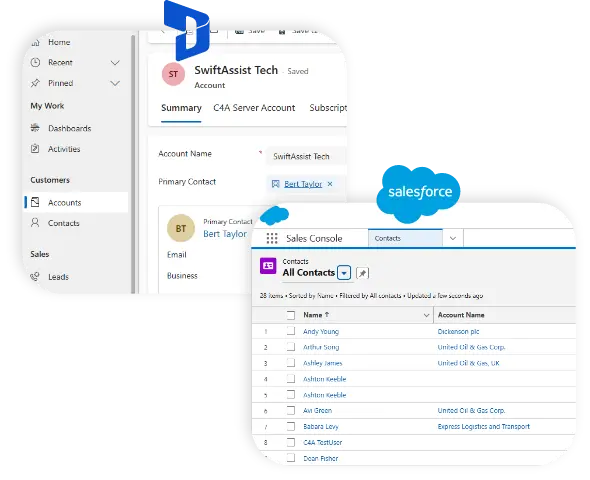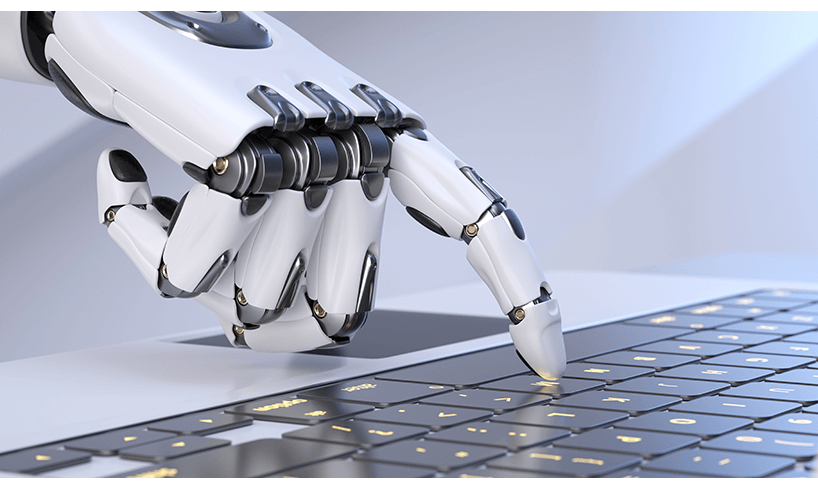Your guide to chatbots and AI in 2023

Discover why chatbots and AI matter in 2023, the evolution of chatbots, the different types available today and how they impact business.
The power of AI-infused chatbots is growing, and businesses are looking to benefit. Chatbots can boost sales, increase customer loyalty, and even enhance internal workflows by answering employee questions.
However, understanding the current chatbot landscape is anything but easy. There are dozens of products, technologies, formats, and solutions. It’s a minefield.
Fortunately, this comprehensive guide is here to help. We explore the evolution of chatbots and AI, the various chatbot types available, and how AI-powered chatbots can help businesses.
What is a chatbot, and why do they matter in 2023?
Chatbots are computer programs that mimic human conversation and make it easy for people to interact with online services using natural language. They help businesses automate customer support, marketing and even sales. Chatbots matter in 2023 because they bring multiple benefits to brands and customers.
For instance, chatbots can reduce operational costs by handling repetitive queries, freeing up human agents for more complex and valuable tasks. They can also improve customer satisfaction by providing instant and personalised responses across multiple channels, platforms, and languages.
There are sales and marketing benefits, too. For example, chatbots can generate leads, recommend products, upsell and cross-sell, and collect customer feedback – all things you can train or program the Click4Assistance bot to do.
The evolution of AI-powered chatbots
Historically, chatbots relied on “expert programming,” where legions of coders would try to account for every answer the software might have to provide. Unfortunately, this approach didn’t work. Even massive investments of time and energy couldn’t yield flexible systems that adapted to users’ queries.
New machine learning and natural language processing technologies helped developers overcome these issues. Systems could now understand complex queries, provide relevant and personalised responses, and learn from feedback and data. They could also generate natural and engaging conversations – a boon for business.
Researchers understood the basic principles of these technologies for many decades before the current AI explosion. However, they didn’t have the data and raw computing power to make it possible. Now that technology is here, the dawn of AI is upon us, with chatbots entering fields as diverse as customer service, e-commerce, education, entertainment, health care, and social media.
Late 2022 and early 2023 were an inflexion point for chatbots – what futurist Ray Kurzweil calls “the knee of the curve.” Intelligent software is becoming ubiquitous in many domains and applications, and customers are getting used to them.
The most significant change is in the power of conversational chatbots. They are now hyper-realistic and can handle complex and multi-turn dialogues, delivering context-aware and personalised responses. This development means users can get meaningful responses tailored to their requirements, not just text regurgitated from Wikipedia.
Chatbots are also bringing multiple interaction styles besides text this year, such as voice, images, video, and gestures. The goal is to provide users with a richer and more immersive experience, enhancing their communication abilities further.
The types of chatbots
Today, experts categorise chatbots into three main types: rule-based, AI-powered, and hybrid.
Rule-based chatbots
Rule-based chatbots are the simplest, most common, and easiest to program. They follow a predefined set of rules to respond to user queries, making them an ideal option for companies wanting to stick to branded scripts and are suitable for straightforward tasks like FAQs, booking, or ordering. Small businesses find them fast, reliable, and easy to program.
The upside is that they won’t deviate from their conversation tree. Bots always direct users towards targeted endpoints, such as sales or human rep interactions.
The downside is that they can only handle specific and predictable scenarios. Complex or ambiguous situations are not their strong suit.
AI-powered chatbots
AI-powered chatbots are more advanced and sophisticated than their rule-based counterparts and represent the cutting-edge of the technology. These pieces of software use the artificial intelligence techniques described above to understand user intents and generate responses. Unlike rules-based systems, they can handle complex and varied scenarios and learn from user feedback. They also engagingly interact with users, helping to build trust and loyalty. Firms love them because they are intelligent, adaptive, and interactive.
Of course, limitations exist. Chatbots may not tow the company line without substantial programming. They may also provide false or misleading answers to trivial questions. They can be inaccurate or biased because they base their outputs on statistical probabilities, not any firm understanding of the truth.
Hybrid chatbots
Hybrid chatbots combine rule-based and AI-powered chatbots, using a combination of rules and AI technologies to deliver enhanced customer experiences.
These chatbots are suitable for a wide range of applications. Their responses are usually balanced but they struggle with conversion optimisation and may not integrate with existing sales funnels.
Big Players In AI
Much of the recent advances in chatbot capabilities emerge from research done by the big players in AI.
- Google. Google has acquired several AI startups and created its own AI research group, known as Google Brain. It also offers TensorFlow, an open-source software library for machine learning, and Google Cloud AI, a set of cloud-based AI services and tools for businesses and developers. Its list of AI-powered products is extensive and includes Google Assistant, Google Translate, and Google Duplex.
- Microsoft. Microsoft is another major player in AI, with its own AI research division, Microsoft Research AI. The firm’s AI solutions include ChatGPT-powered Bing chat, Skype Translator, and Microsoft Cognitive Services.
- Meta. Formerly known as Facebook, Meta is a social media giant that has been investing in AI for a long time. It has an AI research group called FAIR (Facebook Artificial Intelligence Research), which focuses on advancing the field of machine intelligence and developing new technologies for social good.
- OpenAI. OpenAI is the creator of ChatGPT, the most powerful publicly accessible AI system to date. The outfit’s goal is to achieve human-like machine general intelligence in the next few years.
- Amazon. The e-commerce giant Amazon also leverages AI to improve its services and operations. It has an AI research group, known as Amazon Research working on computer vision, natural language processing, robotics, and machine learning.
AI-powered chatbots in business
AI chatbots are transforming industries by providing product information, answering users’ questions, and taking orders. As such, they are revolutionising how businesses interact with their customers and stakeholders. Chatbots are not only a trend but a necessity for brands that want to stay competitive and innovative in the digital age.
The best live website chat service operators almost always integrate chatbots, even if they employ human agents. They are fast and personalised and can offer consistent support to users 24/7.
The main business benefit of chatbots is their automation of dull and repetitive tasks. Examples include:
- Taking bookings
- Arranging appointments
- Answering sales questions
- Calculating better deals
These tasks take human reps time, but machines can do them instantly.
Chatbots can also handle multiple conversations at once. For customers, this means reduced wait times and enhanced satisfaction.
How to build a new chatbot in 2023
Building a new chatbot in 2023 is much easier with Click4Assistance’s Bot Builder. Anyone can do it, thanks to built-in templates, a drag-and-drop interface, and customisation options.

























